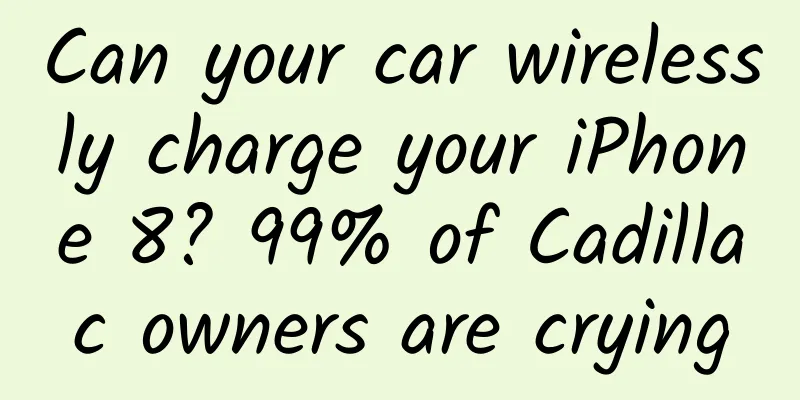The counterattack of the little green men: a review of the history of Android's counterattack against Apple

|
Once upon a time, Motorola and Nokia were synonymous with mobile phones, and the mobile phones they produced occupied half of the mobile phone market. However, since a computer company named after a fruit released a mobile phone without a keyboard in 2007, the good days of Motorola and Nokia have come to an end. Since its launch, Apple's iPhone has been unstoppable, and has been recognized not only by consumers but also by the industry - all smartphones on the market have changed from various strange shapes to large-screen candy-bar designs similar to the iPhone "overnight". After watching the iPhone launch conference, Google's Android R&D team decided to tear down and redo the existing UI, and redesigned a set of UI according to the iOS UI design. As for those companies that did not imitate the iPhone, such as Nokia, everyone knows what the end was (PS. Your Finnish friend is back now). Since the launch of the highly successful iPhone 4 and 4S, Apple has successfully transformed from an industry challenger to an industry benchmark, the "Big Brother". In 2014, Apple alone received more than 85% of the profits in the entire mobile phone industry; Android phones on the same starting line have always played the role of followers, and they are also labeled as imitators, with slightly inferior user experience, but they have successfully occupied the low-end and mid-range mobile phone market with much lower prices.
The old saying that things change over time has been quietly verified once again. After 2016, the Android camp improved the user experience through a lot of innovations, gradually starting from the user's pain points, and making high-quality products by piling up materials, eroding Apple's high-end market. At the same time, the iPhone's competitiveness is no longer as good as before, and it still goes its own way. The annual minor repairs and updates make users gradually unable to let go of their wallets, but the price continues to rise, turning the phone from an everyday item into a high-end luxury product. In early 2019, Apple lowered its performance expectations, admitted that iPhone sales were hindered, and canceled the announcement of sales, and lowered prices again and again. The decline of Apple is not only due to its own complacency and lack of innovation that was eye-catching and disruptive when the first generation of iPhone came out; the Android camp has risen step by step, subverted again and again, and even repeatedly beat the iPhone at press conferences. Behind the repeated beatings is the gradual strengthening of the Android camp. Apple has a long history of manufacturing imaging equipment. As early as 2004, they began to manufacture iSight cameras for computers. In the mobile phone industry, starting with the 5-megapixel camera of the iPhone 4, the iPhone has become the undisputed "best camera phone". For example, the f/2.4 camera of the iPhone 5s in 2013 and the f/2.2 camera of the iPhone 6 series in 2014 were the best industry benchmarks at the time. With their super stable film output, there was even a saying in the market: When it comes to mobile phone photography, only Apple iPhones are the best. Since then, there have been many mobile phone manufacturers who want to challenge the iPhone's industry-leading photography capabilities, but what are the results? The most successful one is the Lumia 1020 from Microsoft/Nokia in 2013. It is equipped with a 41-megapixel CMOS sensor, trying to "crush" the iPhone with high pixels, and is equipped with, well, Windows Phone operating system. But unfortunately, WP is both its success and its failure. Its software does not seem to keep up with the pace of hardware. The poor software synthesis algorithm makes it unable to show the resolution advantage of 41 million pixels (PS. slap Nokia 808 in the face), and the poor white balance and metering algorithm directly make the finished film look lower than the industry average at that time. Is it true that the iPhone's camera capabilities cannot be surpassed? The answer is no. Samsung Galaxy S6 was released in March 2015. For many years, Samsung has been struggling to catch up in the field of mobile phone photography. Finally, Samsung surpassed the iPhone in camera capabilities with S6. Even the 12-megapixel 6s released by Apple six months later still cannot match S6. After that, iPhone has never regained the top spot in camera performance. With the widespread application of deep learning in image algorithms (i.e. AI scene recognition), today's Android phones have made great progress in photography technology. The new generation of multi-camera Android phones represented by Samsung S10+ and Huawei P20 are competing with each other in a new round. Although the iPhone XS's photography ability is still in the top echelon, it is no longer able to compete for the top three (iPhone really can't compete with those plug-in players). Battery life and charging The battery life of the iPhone has been criticized since its release. Although the official claim is that it can reach 10/12 hours of battery life, in real life it is far from the official claimed level. In 2015, an advertising slogan successfully "brainwashed" many users, that is, "Charge for 5 minutes, talk for 2 hours." This actually refers to OPPO's "Super Flash Charge" function, which uses low voltage and high current to charge the phone from 0% to 75% in 30 minutes. Nowadays, flash charging/fast charging has become a standard feature of mobile phones priced above 1,000 yuan, except for Apple. What is even more surprising is that although today's iPhone is equipped with fast charging technology, the power supply included in its package is still a 5V 1A "small water pipe". If users want to experience fast charging, they must spend hundreds of yuan extra to buy Apple-certified adapters and power adapters. We don't know what the motivation for this practice is, but it is clearly another example of Apple's arrogant attitude. In addition to fast charging, today's Android phones are generally equipped with larger batteries than iPhones. For example, the vivo NEX is equipped with a 4000 mAh battery capacity, which can provide enough power for a day's use. On the other hand, the size of the iPhone's battery has not improved for many years. The battery life of the 4.7 and 5.8-inch display models has been complained by users for many years, and often needs to be charged twice or even three times a day. Software quality and functionality Software is Apple's core competitiveness, and the iOS operating system directly determines the user experience of the iPhone. However, since 2013, Apple's software stability seems to have become a big problem. If you are currently using an iPhone or other iOS device, you can immediately verify this argument: just select more than 200 photos in the photo for AirDrop transfer, and the photo app will crash immediately. Problems such as crashes and reboots, built-in apps crashing, system animation bugs, various system vulnerabilities, and unsolvable operations have become common since iOS 7. In comparison, iOS in the Steve Jobs era was much more stable. At the same time, the Android system (also known as "customized system") developed by domestic manufacturers is now gaining more practical and "down-to-earth" functions. For example, the "Big Bang" word segmentation interface invented by Smartisan Technology has gradually become a standard feature of domestic mobile phones, and Huawei's system has begun to use artificial intelligence technology to control background tasks and processor time-sharing strategies. As for the traditional customization advantages of Android, there is no need to say more. Users can customize the appearance and fonts of the operating system according to their own preferences, which is impossible in iOS. In summary, the fierce competition among manufacturers is actually good news for us consumers. Through the past decade of imitation and re-innovation, today's Android phones are no longer the slow, ugly, stupid little green men they once were. The leaders of the mobile phone industry are gradually changing from Apple to companies like Samsung and Huawei. Flagship-level Android devices can already have running speeds that are not inferior to iPhones, and have better battery life and camera capabilities than iPhones. If Apple, once a young dragon slayer who was aggressive in innovation and worked hard to lower prices, has now become an evil dragon that does not want to make progress, who can guarantee that it will not repeat Nokia's mistakes? I hope that after Apple's sales are hindered, it will correct its attitude and return to the product-oriented development route. At least... stop using 5V1A chargers for fast-charging mobile phones. |
<<: Apple declares war on mobile phone "bad habits" for 5G and to save itself
>>: Sony to slash staff: Will halve smartphone business staff by March next year
Recommend
Insufficient phone memory? Here are some tips to help you solve it!
When you are out and about, you find that "t...
Optimization of Sogou promotion account and writing of excellent creative ideas
A good idea is one that netizens are willing to v...
How do effective exhibition advertisers promote their products?
Today I want to talk to you about how exhibition ...
In addition to selling traffic, there are many other ways to monetize new media.
Last Friday, the fashion giant "Rebecca'...
Avita 11 won the "Five-Star Healthy Car" certification and received high scores in all four tests, receiving the highest five-star rating
On January 18, 2024 (Shanghai), China Automotive ...
Kuaishou operation creates a "fast brand" from 0 to 1!
At the beginning of 2022, I became a Kuaishou e-c...
This year, my life was torn apart by WeChat
[[127954]] In 2014, we woke up on WeChat, fell as...
After 5 years of development, Google quietly pushes the official version of Fuchsia OS: no longer based on Linux
Five years after its launch, Google's self-de...
Does Huang Xiaoming’s Nut Projector P1 have the same looks as Angelababy?
Last month, the JMGO Projector P1, invested by St...
Japanese movie "Rurouni Kenshin" live-action version of the four-part series HD Japanese subtitles (2012-2021) collection Baidu cloud download
Japanese movie "Rurouni Kenshin" live-a...
Amap and AutoX jointly launched driverless taxis, which are only tested in Shanghai and are equipped with safety personnel.
Recently, AutoNavi and driverless technology deve...
Omdia: Microsoft will become the world's largest GPU buyer in 2024, purchasing 485,000 Nvidia Hopper chips
The world's largest buyer of NVIDIA GPUs in 2...
From developing product categories to developing industrial chains, e-commerce is moving from the front stage to the backstage
Where there is a vent, there will be a "bubbl...
Beware of scammers! These 8 diseases cannot be cured once contracted, and trusting folk remedies can be fatal
Once they are diagnosed with a disease, many pati...
Domestic TV manufacturers are fighting among themselves one after another. Be careful not to become victims of the competition among giants.
Looking at the development of China's televis...









